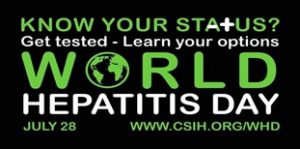 New treatments were approved that can cure over 95 per cent of people who take them for eight to 12 weeks with few side effects. One of these medications works against all strains of the hepatitis C virus, providing more treatment options for people with any genotype.
New treatments were approved that can cure over 95 per cent of people who take them for eight to 12 weeks with few side effects. One of these medications works against all strains of the hepatitis C virus, providing more treatment options for people with any genotype.
A new deal has improved access to many of these new medications in some parts of Canada. Some provinces have committed to no treatment access restrictions by 2018.
Peg-interferon, the notoriously difficult-to-take hepatitis C medication, is no longer available in Canada. This treatment was taken by injection, caused difficult side effects and only cured about half of people with the most common strain of the virus.
While we have had more effective treatments for a couple of years, they had a high price tag, the most notorious being $1,000 per pill. Due to their high price tag, there were restrictions to getting the treatments through provincial and territorial drug plans.
In February of 2017, a group called the pan-Canadian Pharmaceutical Alliance (pCPA) negotiated a drug-pricing agreement with several pharmaceutical companies on behalf of the provinces and territories. This resulted in a deal that lowered prices for six hepatitis C medications.
After the deal concluded, it was up to the provinces and territories to decide to alter their drug formularies. Alberta, British Columbia, Nova Scotia, Ontario, Quebec and Saskatchewan moved quickly to change their drug formularies to increase access. Even better, British Columbia and Ontario are planning to remove all restrictions to hepatitis C treatment in 2018.
Prior to these changes in all provinces and territories, with the exception of Quebec and Prince Edward Island, people with hepatitis C had to have a moderate level of liver injury to access hepatitis C treatment.
With the new changes, all of the provinces that changed their formularies have a long list of exceptions to the moderate liver injury requirement, meaning access to treatment is opened up for many more people.
The list of exceptions includes:
- people who also have HIV or hepatitis B;
- people who have previously had an organ transplant, liver or otherwise;
- people who plan to get pregnant in the next year;
- people who have diabetes and are being treated for it;
- people with serious chronic kidney disease;
- people who have health problems caused by hepatitis C that are affecting parts of the body other than the liver (called extra-hepatic manifestations);
- and people with fatty liver disease, a very common condition where an excess amount of fat is stored in the liver.
Overall, these exceptions open up the opportunity of treatment to many people. We need to share the good news and let people know that treatment access is opening up in many places, medication is no longer difficult to take, and the chances of being cured of hepatitis C are very high.
This content was originally published by CATIE, Canada’s source for HIV and hepatitis C information






